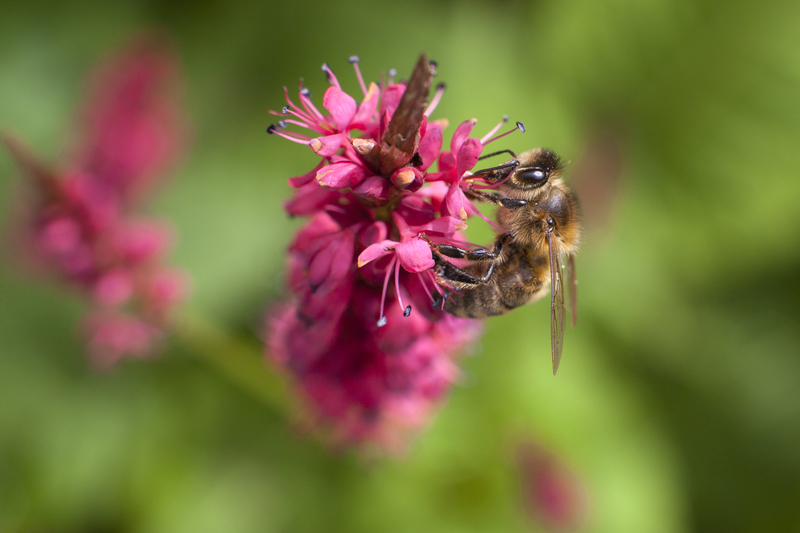Create a wind-smart garden that thrives in all conditions
Posted on 14/08/2025
Create a Wind-Smart Garden That Thrives in All Conditions
As more gardeners face the challenges of unpredictable weather, learning how to create a wind-smart garden that thrives in all conditions has become essential. Wind, whether it's a gentle summer breeze or a relentless gale, can play a major role in shaping the health and success of your landscape. In this comprehensive guide, we'll explore the nuances of wind-resistant gardening--from plant selection to clever design strategies--so your garden flourishes, no matter what Mother Nature throws your way.
Why Does Wind Matter in the Garden?
Wind is not always the enemy; it provides natural ventilation, aids in pollination, and can even reduce certain plant diseases by keeping foliage dry. However, unfiltered or strong winds can cause several problems:
- Physical damage: Broken stems, snapped branches, and uprooted plants.
- Drying out soil: Increased evaporation causes water stress.
- Reduced productivity: Stress inhibits flowering and fruiting.
- Salt spray and dust: In coastal or open environments, wind can deposit damaging salts and dust on foliage.

Assessing the Impact of Wind in Your Garden
Before you create a garden that thrives in every condition, you need to understand your site's particular wind exposure. Follow these steps:
- Observe Wind Patterns: Take note of which direction the prevailing winds come from and their seasonal variations.
- Monitor Trouble Spots: Identify areas where plants consistently struggle, soil dries out, or damage occurs.
- Check Shelter: Existing fences, buildings, or tree lines may provide natural protection or channel wind in unexpected ways.
Designing a Wind-Resilient Garden: Key Principles
A wind-smart garden blends practical design with thoughtful plant choices to thrive in all seasons. Consider these foundational principles:
1. Layered Windbreaks
Windbreaks are not only the first line of defense but also reduce wind speed, protect plants, and create microclimates. Use a mix of:
- Tall Structural Elements: Hedges, treelines, or living fences provide height and structure.
- Medium Shrubs and Perennials: These fill gaps and filter breezes below the canopy.
- Low-Growing Groundcovers: These stabilize soil, prevent erosion, and reduce surface-level wind movement.
2. Strategic Plant Placement
Not all plants can take the brunt of the wind. When planning your windproof garden layout:
- Position wind-resistant species in exposed areas and use them to protect more sensitive plants behind them.
- Group plants according to their wind tolerance to reduce individual stress and create healthier garden communities.
3. Use of Structural and Artificial Barriers
Sometimes living plants are not enough. Complement with:
- Trellises and Lattices covered with vines to slow wind.
- Slatted fences or woven hurdles that act as semi-permeable windbreaks.
- Berms and raised beds to alter wind flow and improve drainage in soggy spots.
Best Plants for Windy Gardens
When choosing plants to create a garden that's wind-resistant and attractive year-round, focus on species that are naturally adapted to exposed conditions. Here's what to look for:
- Flexible or tough stems: These bend rather than break.
- Small, narrow, or glossy leaves: Reduces wind drag and limits moisture loss.
- Dense growth habits: Adds bulk and reduces wind penetration.
Wind-Resistant Trees
- Pines (Pinus spp.): Naturally wind-tolerant, many species suitable for screening.
- Hawthorn (Crataegus monogyna): Tough, thorny, and adaptable to most climates.
- Sea Buckthorn (Hippophae rhamnoides): Excellent in coastal areas; tolerates salt spray.
- Alder (Alnus spp.): Good for wet soils and wind-exposed sites.
Windproof Shrubs and Hedges
- Escallonia: Evergreen, dense, and tolerant of salt and exposed sites.
- Olearia (Daisy Bush): Exceptionally tolerant, especially near coasts.
- Elaeagnus x ebbingei: Fast-growing, tough, and great for hedges.
- Griselinia littoralis: Glossy-leaved, salt-wind resistant.
Groundcovers and Perennials
- Lamb's Ear (Stachys byzantina): Low, soft, and wind-tolerant foliage.
- Vinca (Periwinkle): Great at stabilizing soil and covering exposed ground.
- Armeria maritima (Sea Pink): Perfect for coastal, windy spots.
- Sedum: Drought and wind resistant, colorful summer flowers.
Soil Management in Wind-Smart Gardens
Healthy soil is foundational to a resilient garden, particularly in areas prone to drying winds. Consider these soil-care strategies:
- Mulching: Use organic mulch to retain moisture, suppress weeds, and protect roots.
- Adding Organic Matter: Compost improves soil structure and water-holding capacity.
- Wind Erosion Control: Cover bare soil quickly with fast-growing groundcovers or annuals.
- Wind Stakes for Young Plants: Support newly planted trees or tall perennials, but allow some flex to encourage root strength.
Water-Wise Techniques for Wind-Resistant Gardens
Wind increases evaporation, meaning your plants will need more water to thrive. A wind-smart watering regime includes:
- Deep, infrequent watering to encourage deep roots that withstand both wind and drought.
- Drip irrigation to minimize evaporation compared to overhead watering.
- Morning watering so plants can absorb moisture before midday winds kick in.
Creative Landscaping Ideas for Wind-Smart Gardens
Creating a wind-hardy garden doesn't mean sacrificing style. Try these aesthetic yet practical ideas:
- Wind-sculpted plant shapes: Embrace the natural lean or pruning shapes caused by prevailing winds for visual drama.
- Layered textures and colors: Mix tough grasses, bold shrubs, and flexible perennials to create a dynamic look.
- Pocket gardens and alcoves: Use screens, boulders, or hedges to carve out sheltered spots for seating or delicate blooms.
- Dual-purpose windbreaks: Plant edible hedges (like currants or gooseberries) or flowering shrubs to add beauty and function.
Seasonal Care for Wind-Exposed Gardens
Year-round resilience requires ongoing care and attention:
- Spring: Check and repair windbreaks, prune damaged growth, and refresh mulch layers.
- Summer: Monitor moisture levels, stake tall plants, and provide extra water during heatwaves.
- Autumn: Plant resilient species and hedge rows, and apply compost to build soil for winter.
- Winter: Inspect barriers after storms, trim broken branches, and review the design for possible improvements.
Regular assessments will ensure your garden stays strong and healthy whatever the season brings.
Common Mistakes When Gardening in Windy Conditions
Even experienced gardeners can overlook aspects of wind-smart design. Avoid these pitfalls for the best results:
- Relying on Solid Fences Alone: They may cause more turbulence and do little to reduce wind speed beyond the barrier.
- Ignoring Soil Health: Exposed, dry soil is prone to erosion and poor plant growth.
- Neglecting Plant Compatibility: Not all popular plants can tackle harsh winds--always research before planting.
- Poor Watering Habits: Overhead sprinklers waste water through evaporation.

Frequently Asked Questions About Wind-Proof Gardening
How high should a windbreak be?
Optimal height for a windbreak is typically 1.5 to 2 times the area you want to shelter. The zone of protection usually extends a distance 10-15 times the height of the windbreak on its leeward side.
Can I grow fruit and vegetables in a windy garden?
Absolutely! Choose wild-type or heritage varieties with flexible stems and invest in windbreaks or densely planted rows.
How quickly do windbreaks work?
Fast-growing species like willows, elaeagnus, or privet can start providing shelter within 2-3 years. Supplement with temporary barriers as your living windbreak establishes.
Conclusion: Build a Wind-Smart Garden That Lasts
Creating a wind-smart, resilient garden is about more than just mitigating the effects of the weather--it's about transforming challenges into opportunities. By understanding your site, utilizing layered windbreaks, choosing the right plants, and maintaining healthy soil and water regimes, you can enjoy a lush, productive, and beautiful landscape that thrives in all conditions. Whether you're in a coastal, rural, or urban environment, a thoughtful approach will ensure your garden stands tall in the face of any breeze. Start your wind-smart garden journey today--your future self (and your garden) will thank you!

